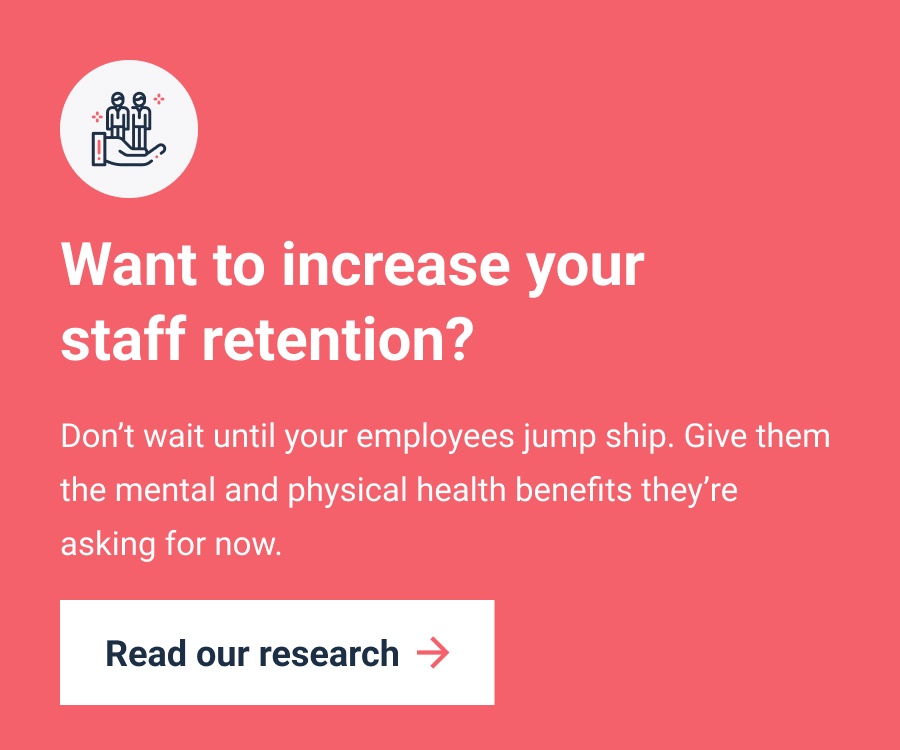Time off is extremely important for your employees’ wellbeing. It allows them to recharge and return to work with a clear mindset.
In the past, companies only offered sick days for physical illnesses and injuries. Then, with a renewed focus on mental health, employers started promoting mental health sick days. However, the idea remained taboo, so many employees weren’t taking the leave available to them. As such, instances of presenteeism continue to be a problem in the workplace.
So how can businesses encourage staff to take time off for their wellbeing?
Introducing employee wellbeing days.
What are employee wellbeing days?
Sometimes, your employees need a rest from the stresses and strains of working. We know workplace stress can be a slippery slope—employees who feel like they’re falling behind are more likely to force themselves to work harder to meet deadlines. This can lead to burnout and other unhealthy practices like leavism.
Employee wellbeing days are designated days of leave that employees can take to focus on their own wellbeing. They’re separate from annual leave and sick days. They allow employees to focus on their own mental and physical wellbeing. To rest and recuperate, bringing their best selves back to work.
Offering wellbeing days shows your employees that you value them as people. It proves that you trust them to take leadership in their own wellbeing and make use of the time given to them positively.
It’s important to note here that everyone is different. You can’t create a standardised procedure that will cater to employees’ wellbeing on their days off. It’s about allowing them to do what’s right for them.
What are the business benefits?
Taking the time to recharge ensures your employees are in the right headspace to produce high-quality work while maintaining their physical and mental health. Not only is this a good wellbeing initiative, but it also reduces economic inactivity and keeps your staff productive and engaged.
Here are some benefits of wellbeing days:
Renewed mindset
Time off allows a working brain to reset and gets your employees back into a clear, positive mindset. Mounting workplace stress can lead to burnout, which negatively impacts mental health.
Common signs of burnout include:
- Feeling detached/alone in the world
- Having a cynical/negative outlook
- Self-doubt
- Procrastinating and taking longer to get things done
- Feeling overwhelmed
Everyone needs a break now and then. Workplace stress clouds the mind, making it harder to concentrate and think positively. Taking an employee wellbeing day brings clarity.
Productivity
According to scientific evidence, employees lead healthier, more productive lives by taking time off. That’s because workplace stress increases mental fatigue and makes it harder to concentrate.
Taking time off refreshes the mind, so employees come back to work with renewed focus and increased motivation. Employee wellbeing days are the perfect way to ensure employees are taking time off that’s beneficial for their performance at work.
Improved health
Switching off helps keep mounting stress at bay, which we know can lead to a range of mental and physical conditions, such as:
- Anxiety
- Depression
- Headaches and dizziness
- Muscle tension and pain
- Stomach problems
Combating stress is critical. A study conducted by the World Health Organization found that worldwide, long working hours were linked to about 745,000 deaths in a year from stroke and ischemic heart disease. Therefore, it’s imperative to stay conscious of your employees overworking.
How can your business implement wellbeing days?
Start by figuring out what’s best for your organisation. There’s no standardised approach to wellbeing—you need to review your initiatives and see where extra days off can fit in. Once you’ve worked that out, it’s time to lay out a plan to implement them.
Here are three things to consider when working out your plan for wellbeing days:
1. How many days do you want to offer?
Whether it’s once a year or once a quarter, you need to work out how many employee wellbeing days are beneficial to your staff. You want to achieve the right balance between how many days off you offer employees and how much they benefit from them. This maximises the advantages whilst causing minimal disruption.
2. Work out the request procedure
Consider how employees will request wellbeing days. Will they use the HR platform they’d typically use for annual leave? Or would they agree on it with a manager?
3. Set out your policies
You’ll want to create policies around the wellbeing days as you would with any other workplace benefit. These should go into your contracts of employment and any other relevant documentation. Your policies might include information about how much notice an employee has to give before taking their wellbeing days and how many staff can take them at once.
A great way to test the effectiveness of your plan is to run a trial. Offer out one wellbeing day to all your staff and collect some feedback about how it benefited them. From there, you can tweak your policy to suit your employees and your organisation.
4. Offer the right resources
To help your employees make the most of their wellbeing days, you may choose to offer them extra resources. Employees can use these to make the most productive use of their time off and to care for their wellbeing.
A holistic wellbeing app like Symbio is the perfect way to offer resources that your employees can access from anywhere. Whether it’s in the office, at home, or in the park.
We all need time off for our wellbeing
Employee wellbeing days help to keep stress at bay and clear the mind. By offering your employees wellbeing days outside of their annual leave and sick days, you show them that you respect their individual needs. It also proves you understand there are different reasons for time off, and that an employee wellbeing day encourages positive self-care.
Try implementing employee wellbeing days using the tips above to see what benefits your organisation can gain.
Visit our resources page for more information on improving employee wellbeing. Or, contact us today to discover more about how our service can help your workforce.






